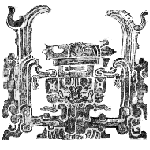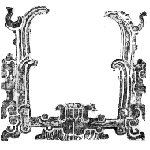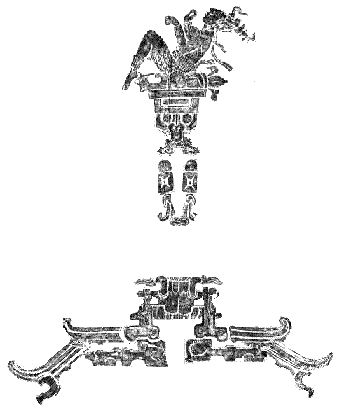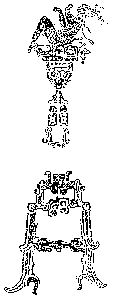Science in Ancient Artwork
PAKAL, THE MAYA ASTRONAUT:
A STUDY OF ANCIENT SPACE TRAVEL
by Charles William Johnson
PART: V
A Maya Lift-Off
The superficial view formed by integrating the separate images of the housing and the vehicle's motor portray and reflect a faithful representation of the event know as "lift-off", as we know it regarding a space vehicle rising above the earth's gravitational pull within our atmosphere. Let us now observe how the combined views may from a specific images of lift-off. First, let us observe the essential views of the housing and the motor.

The housing and motor as originally presented in a folded position |

The housing as originally presented in a folded position |

The motor as originally presented in a folded position |
©1995-2009 Copyrighted by Charles William Johnson
Now, we may visualize Pakal himself seated atop the module's motor section, rising into space. The posture and inclination of Pakal's body now takes on a renewed meaning as the concept of movement seems to integrate his image with that of a new conceptualized moving vehicle.

In one position, the housing might serve as a landing pad for a space module, while in the fully extended position, with locked braces, it might appear to represent a launching pad, similar to NASA's lunar module vehicle. There could be any number of intermediate positions involved in this design. A computer- assisted analysis might be able to explore such possibilities.
 |
 |
©1995-2009 Copyrighted by Charles William Johnson
Pakal: The Maya Astronaut
Part V |
"Pakal,
The Ancient Astronaut:
Paleoanimation of the Sculpture of the Maya at Palenque"